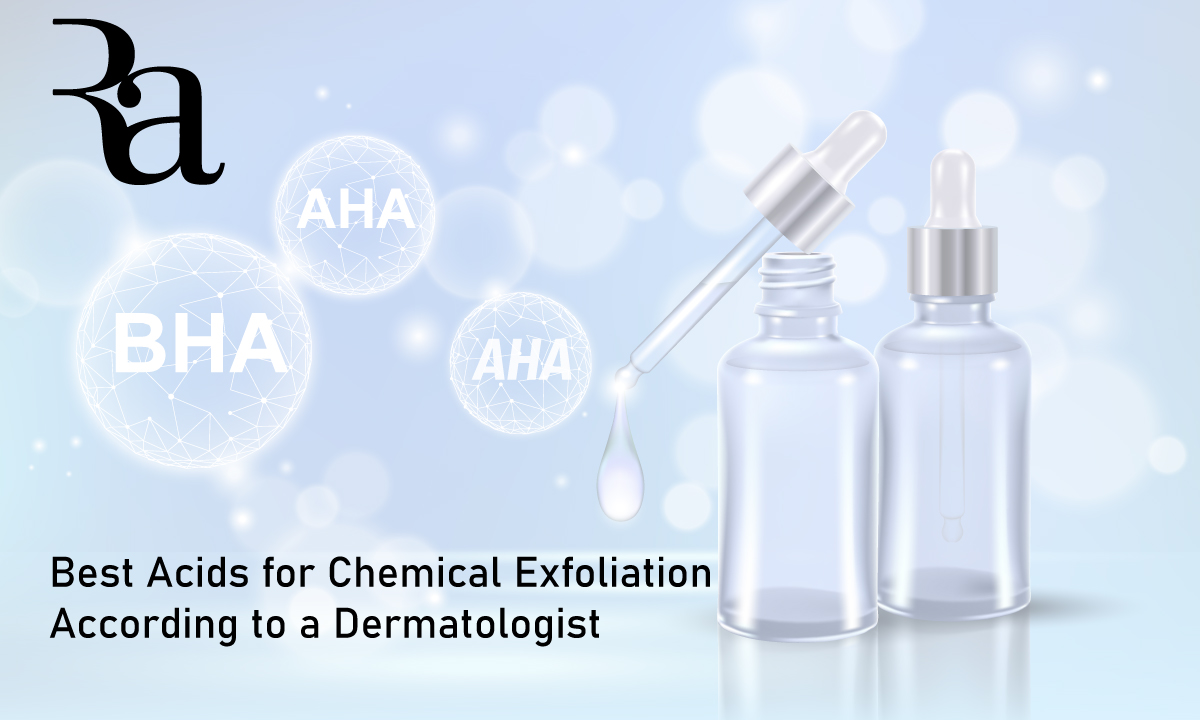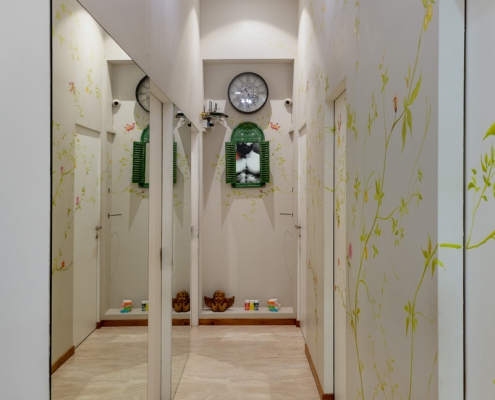Best Acids for Chemical Exfoliation According to a Dermatologist
Our skin is a multi-layered structure which can be divided into 3 main categories based on their location
- The outermost epidermis
- The dermis
- Subcutaneous fat
The epidermis is our first line of defence against external factors and is comprises of 5 sub-layers. The stratum corneum is the topmost layer of the epidermis. The epidermis is composed of specialized cells and keratin, which makes it very resilient.
The primary cell types found in the epidermis is known as keratinocytes which are manufactures in the basal layer and then pushed to the top. Once they reach the stratum corneum, they develop a thicker cell envelope to become corneocytes.
A healthy stratum corneum shed one layer of corneocytes every day. However, this shedding mechanism is impacted by age, skin type, skin conditions and even the weather.
If corneocytes keep building up, it veils the smooth, plump & bright skin cells lying underneath. This is when exfoliation comes to the rescue.
Types of exfoliation
Mechanical: These involve physical exfoliates which take off the top dead cell or corneocyte layer. Micro-dermabrasion and the dreaded physical scrubs are examples of mechanical exfoliation.
Chemical: Chemical exfoliation makes used of skin-friendly acids to dissolve the bonds between the dead skin cells, so they slough off effortlessly. It is a gentler alternative and my preferred way of exfoliating.
Types of exfoliating acids
Alpha Hydroxy Acids (AHA): Usually extracted from plant-based sources, AHA’s are water-soluble so it can work best in the surface level and cannot penetrate through the fatty layers of the skin.
Beta Hydroxy Acids (BHA): Unlike AHA’s, BHA’s are fat-soluble, so they can penetrate deeper into the pores and give deep exfoliation to the skin.
Five acids for Chemical Exfoliation
- Glycolic Acid (AHA)
It is usually extracted from sugar cane or other sugar crops and happens to be one of the most studied and researched acid in skincare. Since it has a small molecular size, it is easier for it to permeate through the skin and do its job.
- Lactic Acid (AHA)
Lactic acid has a humongous molecular size which makes it a very superficial exfoliating agent. It is one of the least irritating acids in skincare because it is unable to go too deep into the skin. Lactic acid is hygroscopic, meaning; it can pull moisture from the surrounding and use it efficiently to hydrate your skin. Although mild, it is still very effective at treating superficial pigmentation and fine lines.
Thus, this acid is a fabulous choice to exfoliate dry skin, sensitive skin and even acne-prone skin which is also dry. It is also a great acid for those who are just dappling into chemical exfoliation.
- Mandelic Acid
Mandelic acid can travel a little deeper than lactic acid up to the stratum spinosum of the epidermis. It is still very low on the irritation scale. It is often derived from bitter almonds. It resurfaces the skin, which leads to increased cell turnover, thereby, diminishing the appearance of superficial hyper-pigmentation. It has anti-bacterial properties which makes it a great acid for acne-prone skin.
- Malic acid
It is a fabulous brightening acid which is quite gentle on the skin. It can be found in a variety of fruits, including apples. Its gentle nature makes it perfect for sensitive skin and also makes it possible to use in combination with other AHA’s.
- Salicylic acid (BHA)
Salicylic acid is a blessing for those with acne. Being oil-soluble, it goes deep into your pores and flushes out the gunk that’s clogging it leading to flare-ups. It also has anti-bacterial and anti-inflammatory properties to help soothe irritated skin. It is, however, quite irritating and is best used under professional supervision.
In-clinic treatment at Ra
One of the biggest concerns with at-home exfoliation is over-exfoliation which compromises the protective skin barrier, which can lead to dryness, flaking and acne. It is also essential to choose the right acid for the right skin type, and as they say, the poison lies in the dose. If one goes wrong in this stage, it is a recipe for disaster. It can burn the skin leading to hyperpigmentation. This is why it is best to leave this delicate job to professionals like me.
We offer chemical peels for the face as well as the scalp at Ra. A lot of pre and post-peel treatments are administered to achieve the best results without causing any harm to the skin.
So, if you want smooth, bright and glowing skin for the upcoming festive season then drop in by our clinic to experience these effective treatments. You may give us a call at +91 9833055236, and we will be delighted to help.
For more such tips and information from Dr Rashmi Shetty follow her on
https://www.instagram.com/solskincorp/
https://www.instagram.com/drrashmishettyra/
If you have any questions or clarifications after reading this article, please send a DM to Dr Rashmi Shetty.













Leave a Reply
Want to join the discussion?Feel free to contribute!